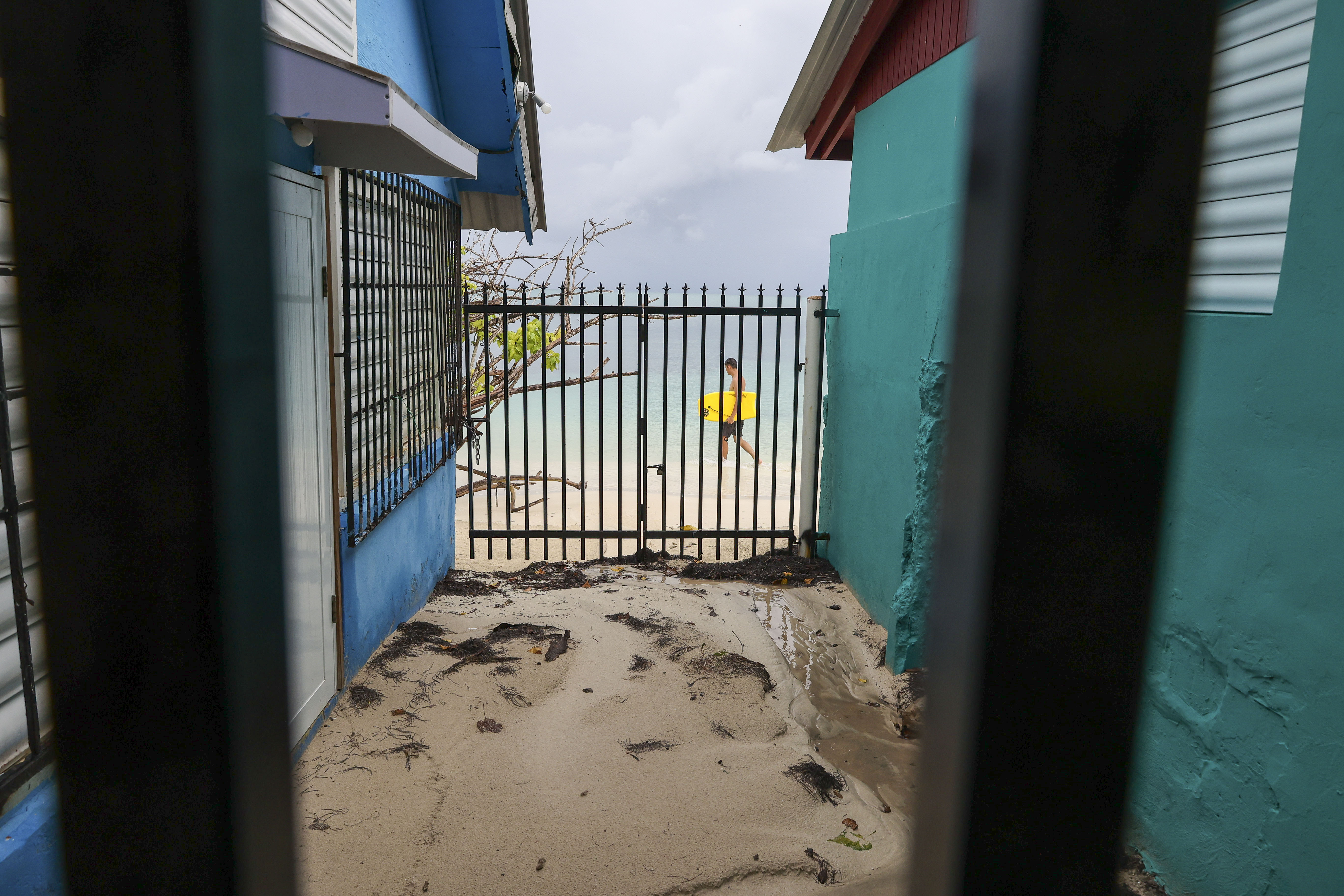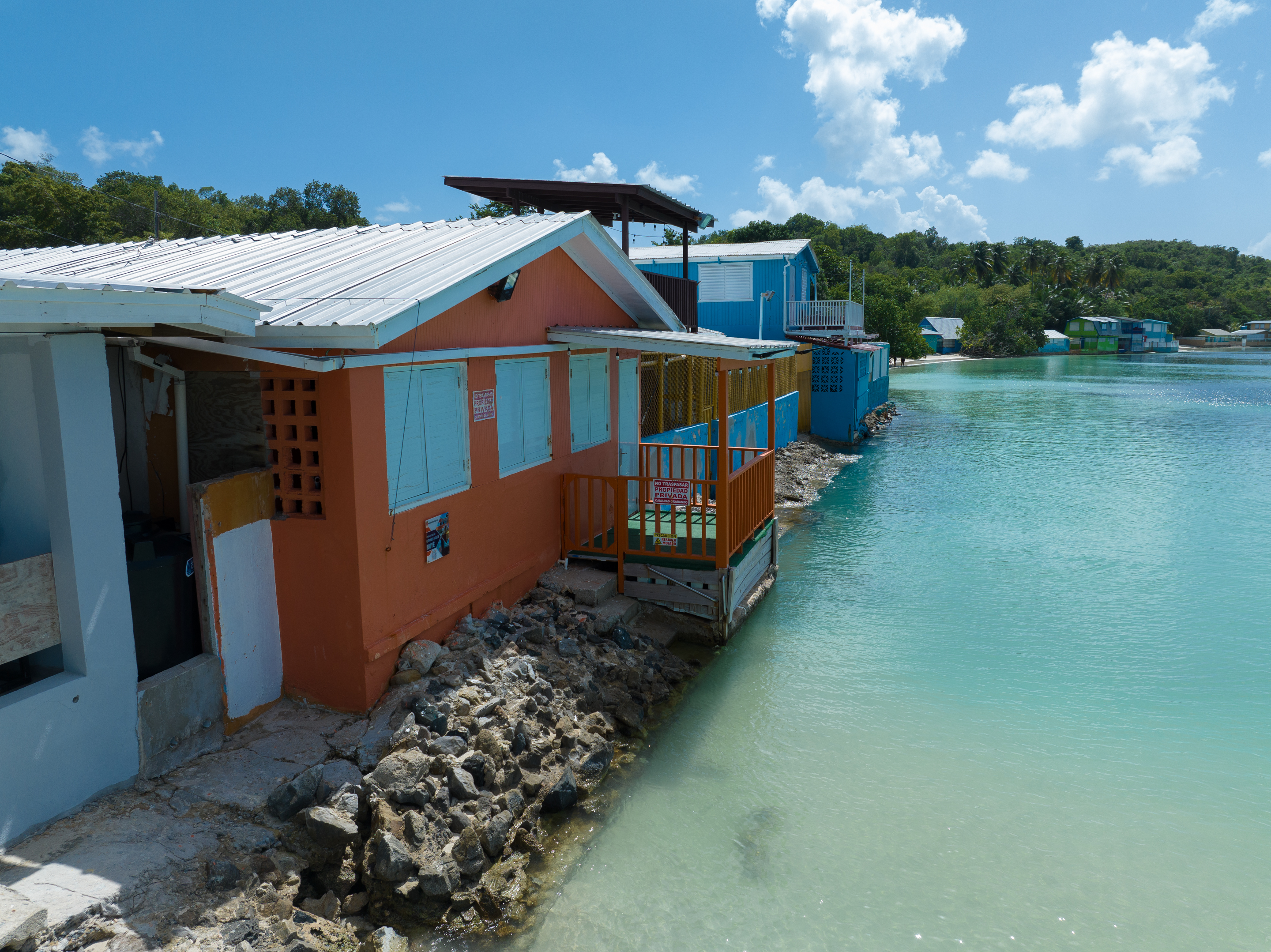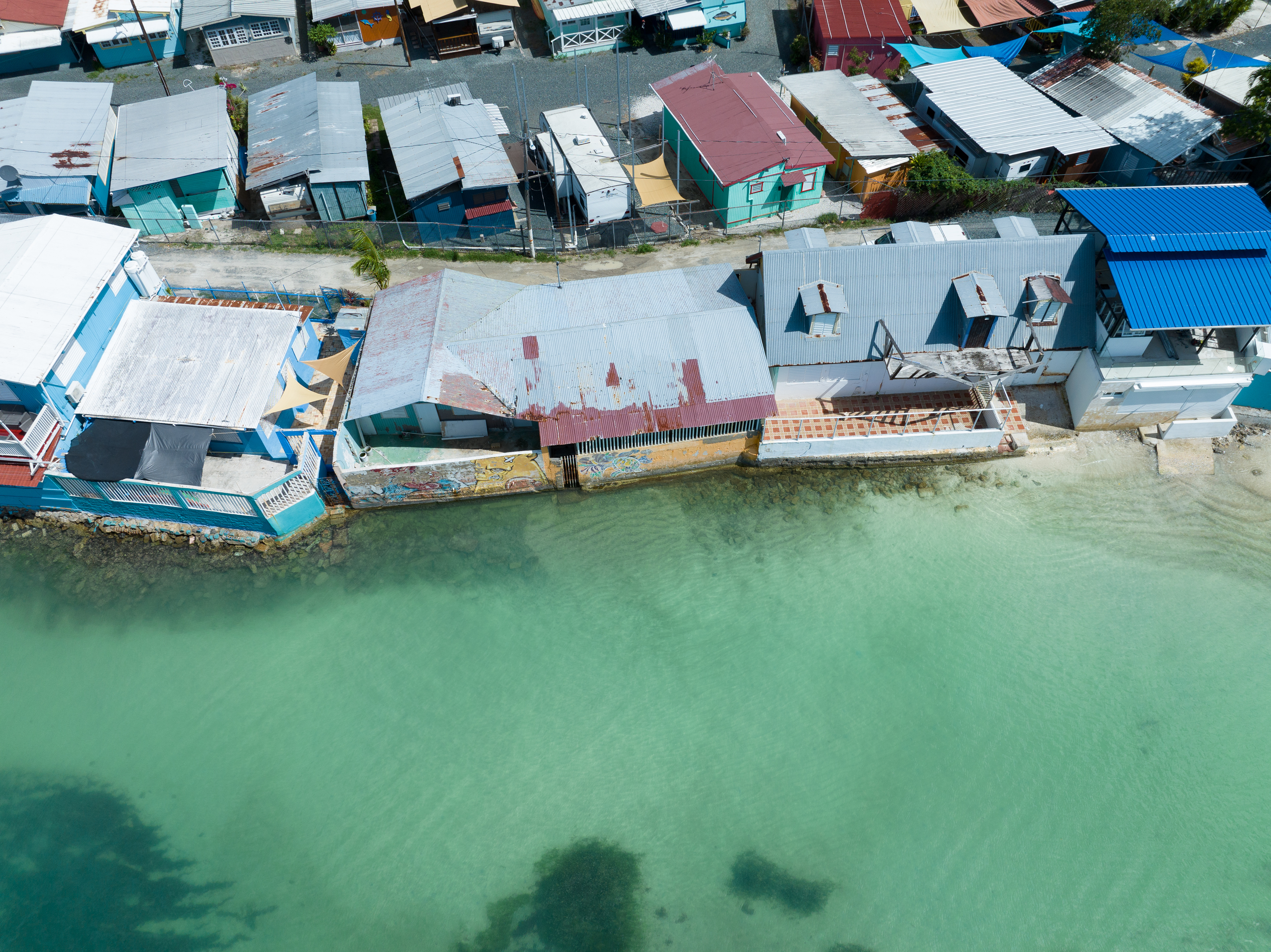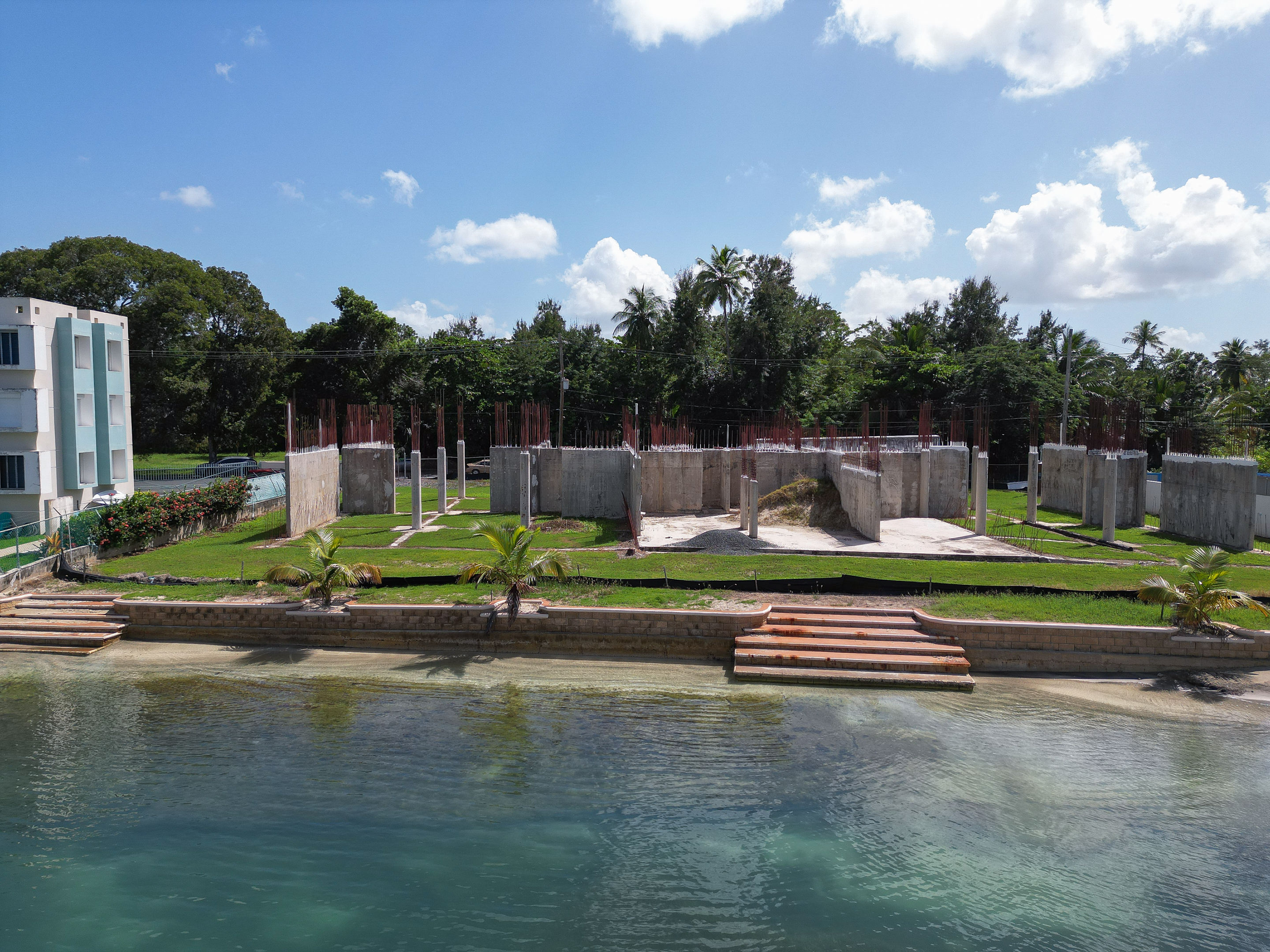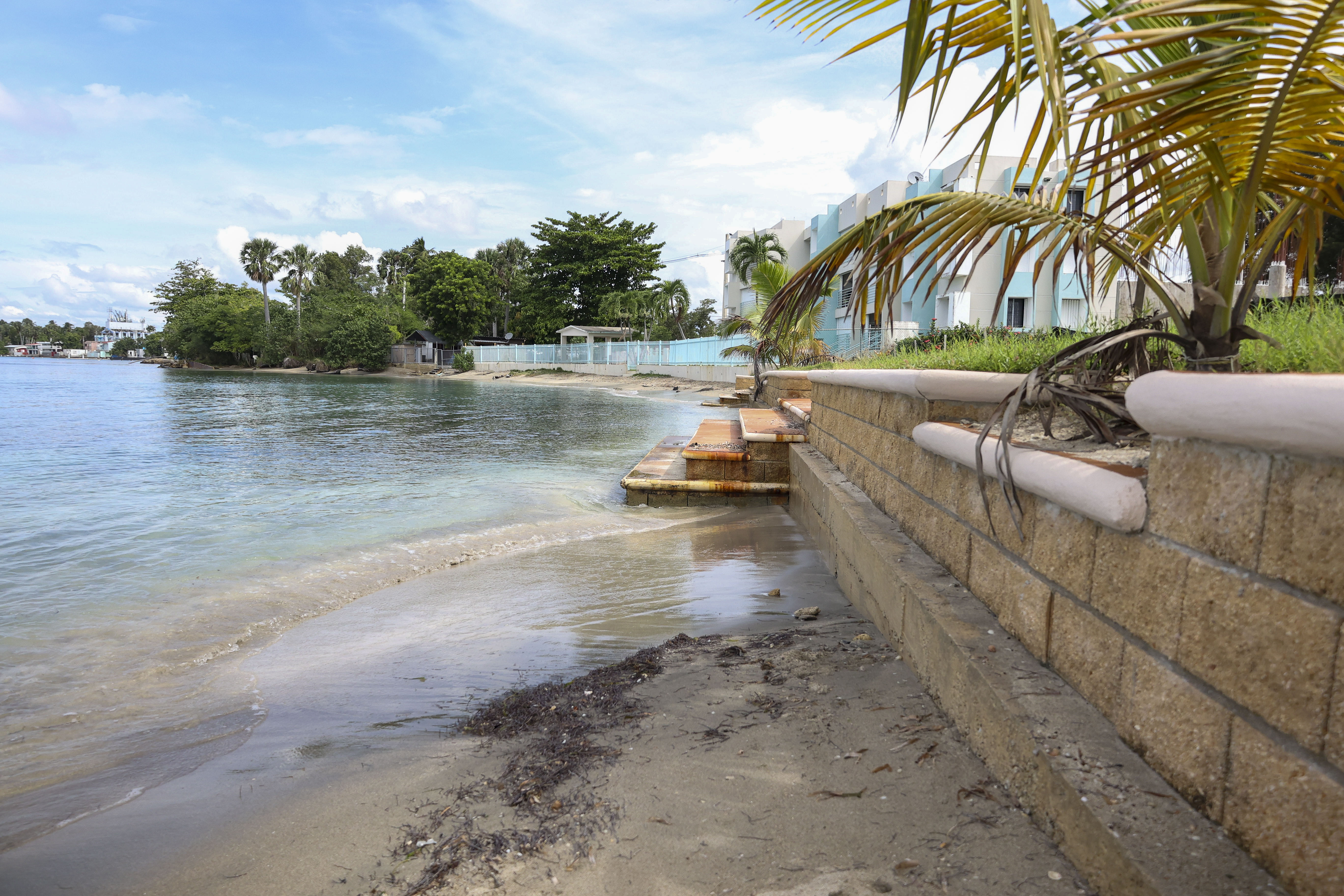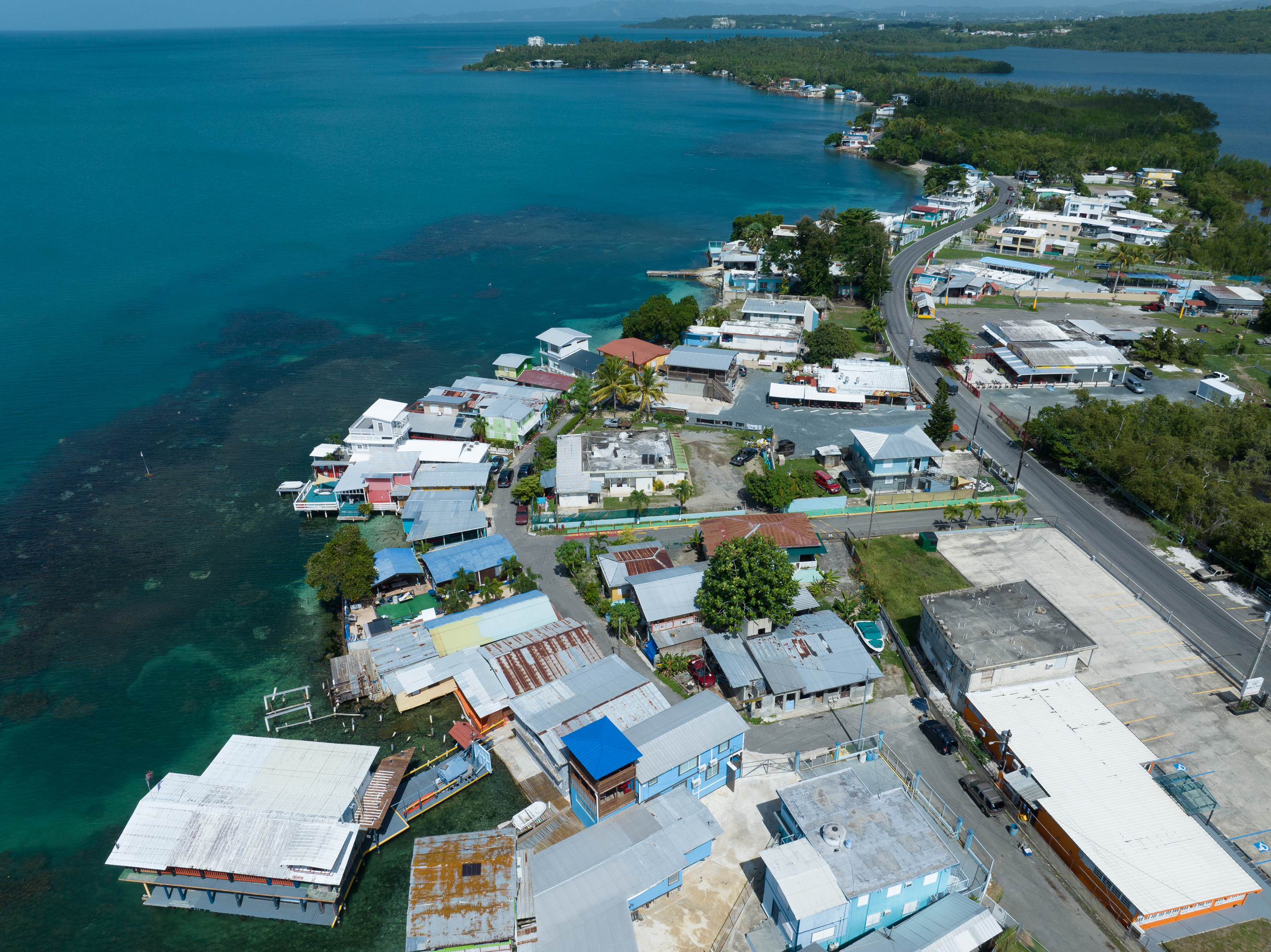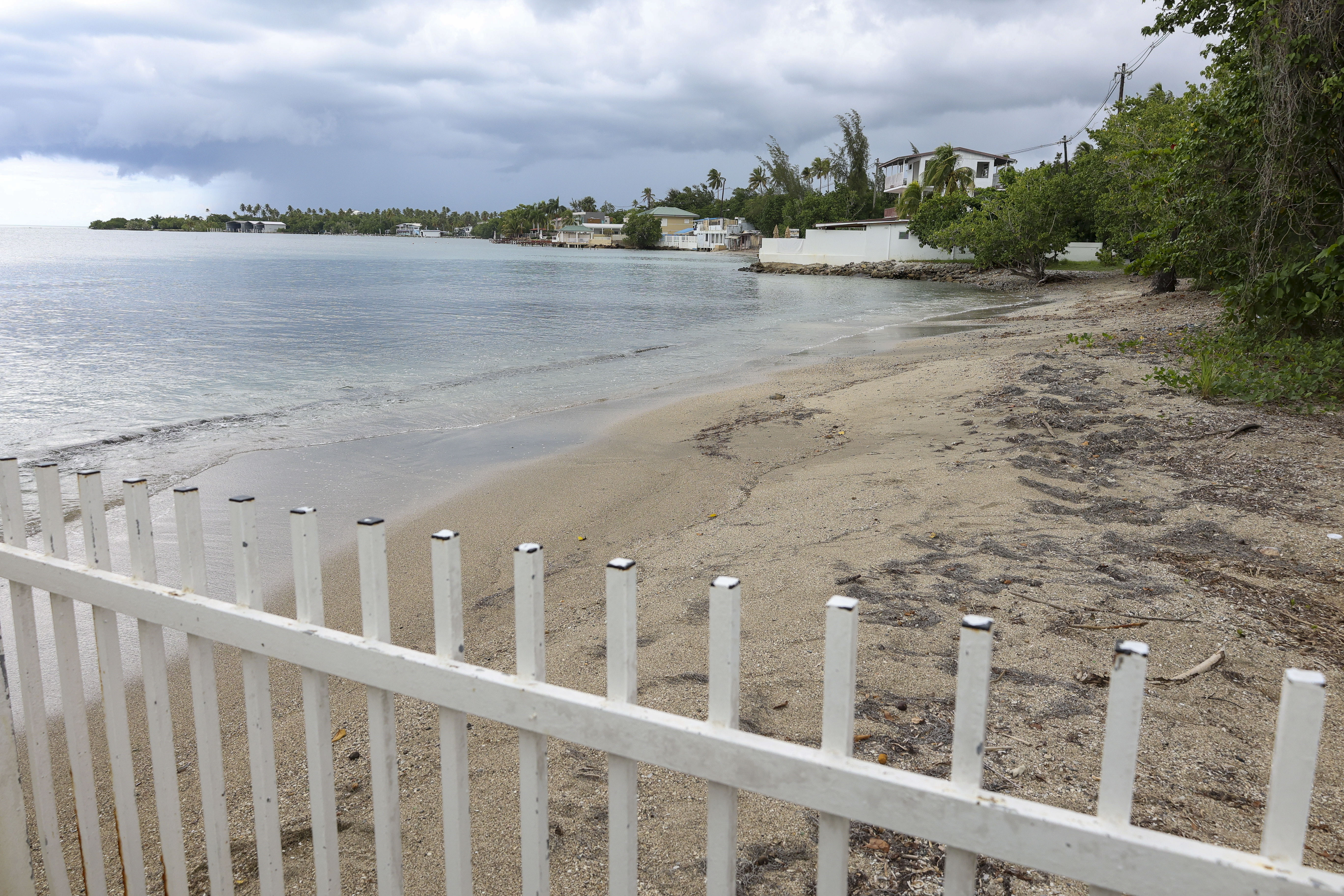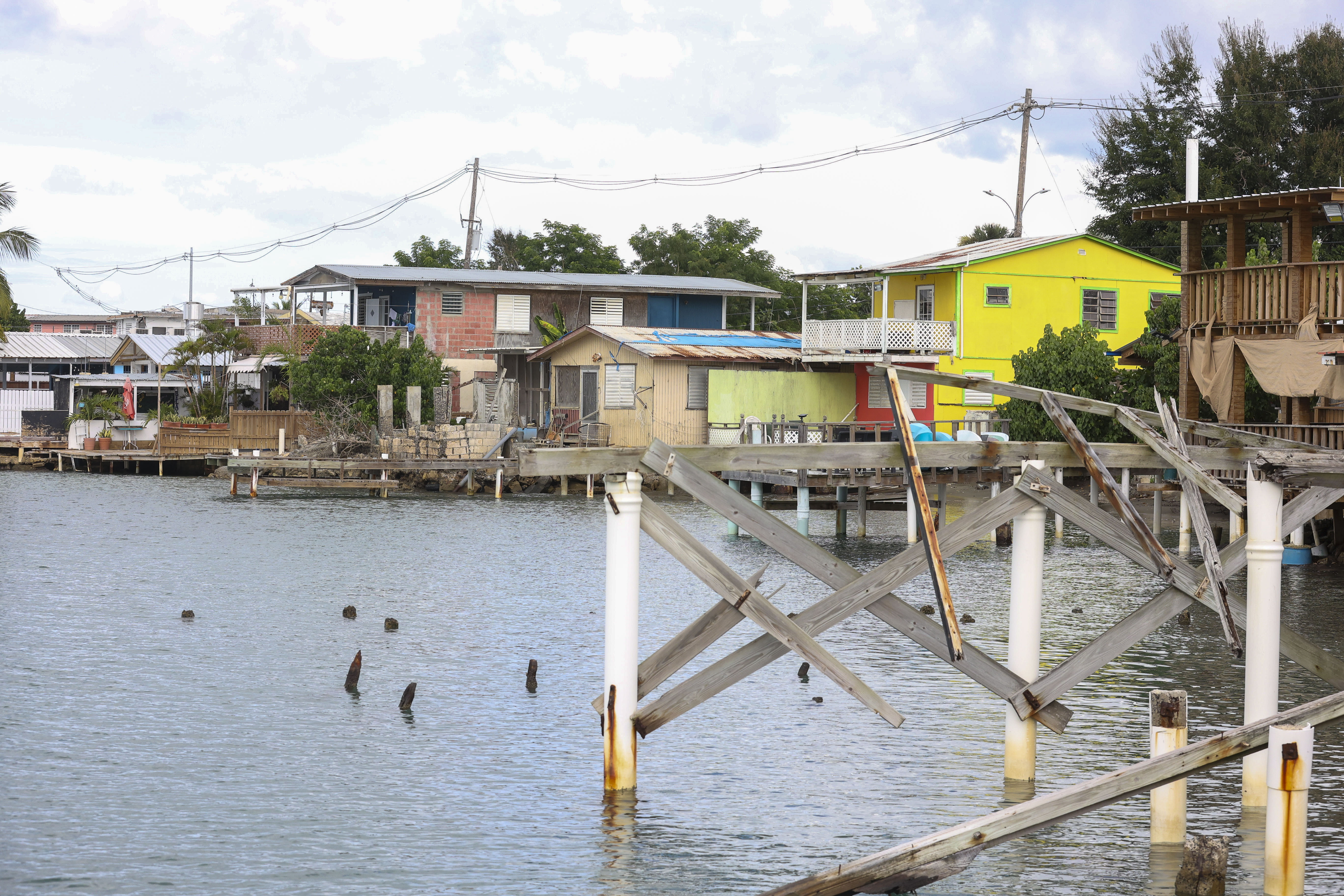The soft, blue waves of Buyé Beach on the southwest coast of Cabo Rojo, slap against the foundations of more than 20 houses that are practically in the Caribbean Sea waters. Their location in the Maritime Terrestrial Zone (ZMT, in Spanish) spurred an administrative and judicial dispute that, almost two decades later, sees no resolution.
Despite having the power to do so, the Department of Natural and Environmental Resources (DRNA, in Spanish) has not evicted or forced to eliminate these structures that are in the ZMT, according to the plans of the last demarcation made of the beach, which show where the public domain zone begins.
To this day, due to the DRNA’s inaction, the orders issued by that same agency in May 2015 in which it rejected the structures in the ZMT and ordered the eviction and elimination of the houses — mostly used for commercial and summer rentals and not as their owners’ primary residences — have not been executed.
“The order established that the structures are located in the Maritime-Terrestrial Zone (ZMT), an Area of High Natural Value where species considered endangered are protected, and a Natural Reserve for the enjoyment of all residents of Puerto Rico,” the DRNA Resolution states.
“There is no public or private need for them to continue occupying a space of high public interest, a space in the public domain,” the document adds.
In May 2015, the DRNA gave the owners six months to vacate the structures and three more months after to demolish them. However, the houses are still there, and some are used for their owners’ commercial benefit as they make money from renting them. The agency did not respond to the CPI as to why it has taken so long to act on an area it defined as ecologically important.
“Regarding the eviction procedures and ongoing investigations, the Legal Affairs Office evaluates the best legal strategies and available options,” said Rafael González, director of the DRNA Legal Affairs Office in a written statement about the status of the resolutions issued eight years ago.
Gloribel Albino Caraballo, who frequents the area as an art and wood engravings vendor, was surprised that the government allowed properties that were damaged by Hurricane Maria to be repaired. She hoped that, on the contrary, the situation would have been used to impede their reconstruction.
“This [human] impact is much greater than that of Hurricane María,” said Albino Caraballo.
Oceanographer Martiza Barreto Orta said that certain segments of Buyé beach, one of the favorites of Puerto Ricans and tourists, showed a greater incidence of coastal erosion after Hurricane María, six years ago, unlike previous years.
This phenomenon, she warned, could result in the eventual disappearance of certain segments of the coast, especially if there are hard structures, such as the properties in controversy.
The segment of beach on which these structures were built disappeared, and they are now on the water. The oceanographer said the loss of sand in certain segments of the beach near these homes could be related to the presence of these houses because the hard structures can change the dynamics of the waves and affect adjacent areas.
Tour guide Harvey John Ducot said, after the hurricane’s impact, he noticed that Buyé lost even more sand. A loss that already existed due to coastal construction that contributed to the area’s erosion.
Developments in the ZMT are prohibited because, in addition to the damage they inflict on the coastline, as in Buyé Beach, it is a use of a space that belongs to the public for free.
However, the secretary of the DRNA, through Regulation 4860 — approved in 1992 — can grant concessions that are written consent “for the long-term use of assets of the maritime-terrestrial public domain that entails the installation or use of permanent or irremovable projects.”
But none of the 24 structures in controversy on the Buyé coastline have an active concession, according to a list that the DRNA provided.
As of October, there were only 85 concessions granted in Puerto Rico for docks, fish markets, boardwalks, and other structures, the list shows. However, 68% of the concessions on the list expired. Furthermore, this number does not coincide with the real number of this type of structures that are seen in the archipelago. An investigation by the Center for Investigative Journalism (CPI, in Spanish) published in October 2023 found that there were at least 167 docks on the island municipality of Culebra alone. The island municipality does not have any active concessions, according to the DRNA’s list. DRNA Secretary Anaís Rodríguez Vega did not answer the question of the discrepancy between the number of concessions and the existing structures.
Through an investigation of the Ineffective Coastal Protection series, the CPI found that the government of Puerto Rico is inconsistent in its public policy when, on the one hand, it issues protective orders for the environment, such as this one in Buyé, but does assume execution or supervision to avoid new illegal constructions on the coastline, as has also happened in Isabela, Vega Baja, and Arecibo.
The cases revealed in the series are just a sample that shows the challenges of the island’s adaptation to the climate crisis and implementation of the plan proposed by the government. The DRNA secretary did not react to the problem generated by the lack of leadership to enforce environmental laws, regulations, and orders.
The Study on the value of beaches in Puerto Rico, that the DRNA ‘s Coastal Zone Management Program commissioned to the Estudios Técnicos firm, stated in its report published in September 2022 that “there is a broad legal and regulatory framework for the protection of this resource [the beach], however, the implementation and supervision of the laws and regulations have not been adequate.” The report recommends the approval of a Coastal Act.
Structures in Buyé proliferate freely
In 2008, then DRNA Secretary Javier Vélez Arocho denied the concessions for the use and exploitation of the structures on Buyé Beach that between 2006 and 2008 were requested by at least 21 of the owners of the 24 houses that were initially part of the controversy. The order also included the removal of illegally built structures. In 2015, after several administrative and judicial procedures, former DRNA Secretary Carmen Guerrero reaffirmed the decision to deny the concessions and eliminate the houses.
The owners of the structures opposed that decision and through separate filings, about 20 of them went to the Court of Appeals in 2015 and 2016 asking it to review the DRNA’s determination. However, the appeals were dismissed.
Another one of the owners, Luis E. Del Toro Román, submitted his own request for a revision, but the Court of Appeals said on February 8, 2016, that it was not appropriate because he went to the judicial forum prematurely. In turn, the forum stated that the DRNA was obliged to hold a hearing to reconsider the denial of the concession.
Neither the DRNA nor Toro Román, who is a lawyer and represented himself, answered the CPI’s questions as to whether this administrative hearing was requested or held.
Attorney Damaris Quiñones Vargas, who represented more than 15 owners, explained that since that February 2016 ruling, the DRNA has not held any administrative hearings to discuss the challenge that her clients posed about the agency’s decision to ban them from the benefit of the ZMT.
The agency has not carried out the evictions it ordered in 2015, so the case has been in a sort of limbo. The houses are still there and at least three operate as short-term rental businesses. One of those rental properties is being remodeled without the necessary use and construction permits, the CPI found.
Environmental attorney Miguel Sarriera Román pointed out that the denials of concession requests are active. Sarriera Román represented two inns in Buyé and two private citizens who, in 2005, filed a lawsuit against the DRNA for doing nothing against these structures located in the ZMT.
The owners of the structures claimed that the houses were there before erosion sank them or brought them closer to the sea, so they had the right to stay.
In the lawyer’s opinion, while the Court of Appeals said in its ruling that it was not discretionary to hold a hearing, the DRNA must hold it for those owners of structures in Buyé who challenged the denial. Once the hearings have been held and the ZMT use concessions denials have been upheld, it will be then that the eviction and the dismissal of orders can be declared final and firm.
Puerto Rico Aqueducts and Sewer Authority Press Officer Nathalia Colón Cosme said the area where the structures are located does not have a sanitary sewage system. Over the past four years, Buyé Beach has had 14 environmental notifications declaring it unsuitable for bathers by the Beach Monitoring Program due primarily to levels of enterococci, which indicate fecal contamination.
Cabo Rojo Mayor, Jorge A. Morales Wiscovitch, claimed he is unaware of the legal conflict that has been going on for almost a decade between the DRNA, the group of Buyé citizens, and the owners of the structures in the Maritime Terrestrial Zone.
“We would have to look at the decisions that Natural Resources makes because there are rights that [the homeowners] have had for many years,” said Morales Wiscovitch when the CPI explained the controversy to him.
Cabo Rojo welcomed 147,896 tourists from abroad in 2022, according to Discover Puerto Rico’s estimates. Local and foreign tourists flock to this coastline in droves.
Impressive loss of beaches
About 20 minutes from Buyé, along PR-102, you can see the construction of new buildings and renovations a few meters from the sea and in abandoned properties in Joyuda.
This community is a common dining destination for local and foreign tourists, with restaurants right on the shoreline. In fact, it is such an urbanized and commercialized area that the public must walk several meters to find any access to a scant beach area that, to make matters worse, has been hit hard by coastal erosion.
Until October 2023, in this area where there are many restaurants with terraces and buildings with docks, only three structures had concessions to be in the ZMT, according to the DRNA list.
The president of the Comité Caborrojeños Pro Salud y Ambiente, Pedro Valle Carlo, denounced that the constructions in the ZMT have caused the loss of sand along the Joyuda coast.
“How the beaches have been eliminated in the Joyuda area is dramatic,” he warned.
Valle Carlo said there are dozens of abandoned homes, as well as new constructions of luxury homes, along Joyuda’s coast.
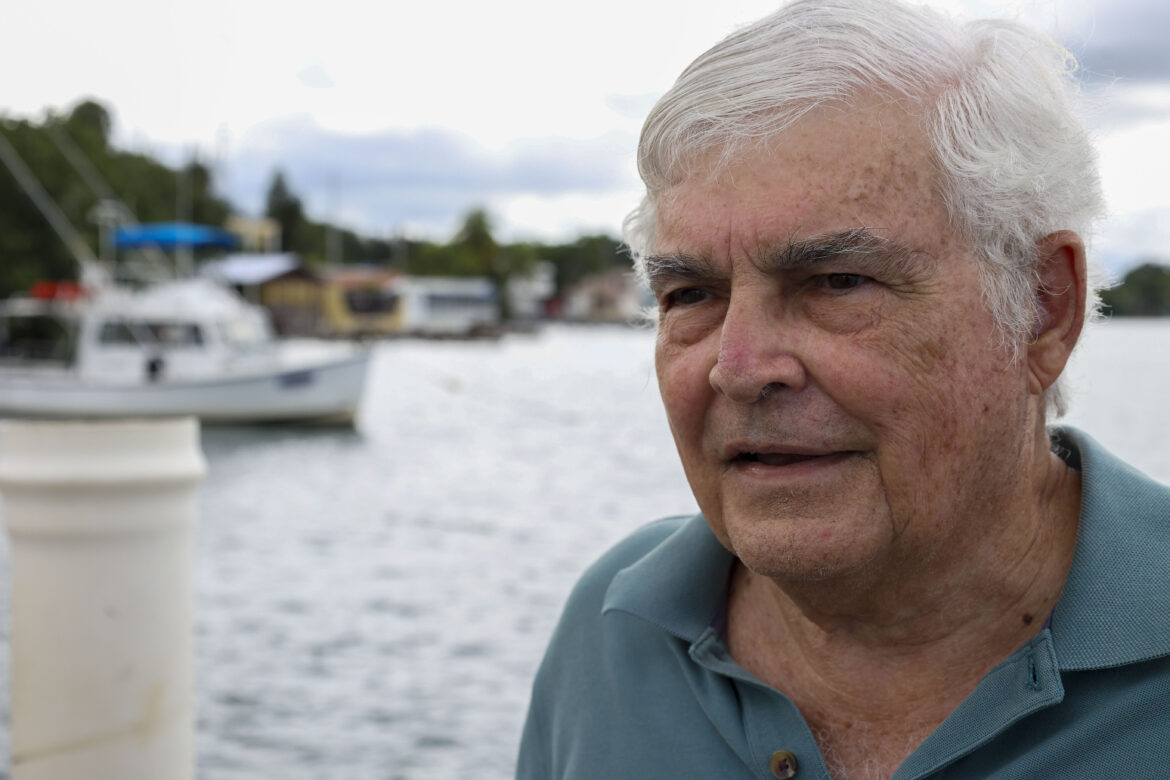
Photo by Gabriel López Albarrán | Centro de Periodismo Investigativo
“They build mansions here on the coastline and nothing happens,” the environmental leader said.
According to the study of the state of the beaches, water line migration was also identified in the Joyuda Beach Condominium. Cabo Rojo is one of the towns with the greatest migration of water line inland with 0.50 kilometers after María, according to the state of the beaches study.
Act 33 of 2019 states that planning, infrastructure, and buildings in Puerto Rico must be more resilient to climate change.
For Carl Soderberg, member of the Committee of Experts and Advisors on Climate Change, it’s impossible to determine how much Puerto Rico has advanced toward resilience because reconstruction after Hurricane María has only just begun six years later.
“We have to wait for what needs to be rebuilt because it is assumed that both the government of Puerto Rico and FEMA have given instructions so that what is built is resilient,” the CEACC member warned.
A CPI investigation in 2022 revealed that 65% of the construction permits approved by the Puerto Rico Permits Management Office (OGPe, in Spanish) between 2015 and 2021 were for one of the 44 coastal municipalities. The CPI asked the agency for the database of construction permits approved from January 2021 to the present in coastal towns, but at press time it had not been delivered.
The director of the Applied Center for Engineering and Ocean Sciences of the University of Puerto Rico’s Mayagüez Campus, Miguel Canals Silander, said the progress that has been made toward resilience has been due to the pressure exerted by coastal communities on government agencies faced with a permit system that, as in the case of the Sol y Playa Condominium in Rincón, has incorrectly granted permits.
“This has caused, at least, some agencies to be more careful when issuing permits in coastal areas,” he said, referring to complaints from environmental groups in cases such as Sol y Playa.
Governor Pedro Pierluisi announced last week a new version of the Single Business Portal, the platform used to manage government permits. One of the changes is the automatic and electronic validation of the single permit which will then be legitimized by an inspector, as well as the construction permit, when it has complied with the endorsements of the applicable agencies. This process can now be carried out in 20 municipalities.
Solutions without action
After visiting the Buyé and Joyuda communities, in Cabo Rojo, another of the beach stops most frequented by local and foreign tourists is La Parguera, in Lajas.
This community is home to one of the few bioluminescent bays in the world and has gained notoriety due to complaints of environmental violations by the owners of the almost 150 structures that have been anchored along its coastal coastline for decades, despite government plans and agreements to manage this situation.
For example, the Management Plan for the Southwest – La Parguera Special Planning Area provides for the elimination of fixed structures on the perimeter of the natural reserve’s mangrove, the protection of its wildlife, as well as the prohibition of illegal occupation of the ZMT. This plan was approved in 1995 following a memorandum of understanding between the U.S. Army Corps of Engineers (USACE) and the Commonwealth agreed upon almost two decades earlier, which also banned the approval of new construction permits.
In August 2023, the DRNA filed four complaints against owners of structures for possible environmental violations in the La Parguera natural reserve. One of those complaints is against Irma Llavona Rivera and José Del C. Vargas Cortés, in-laws of the resident commissioner and aspiring candidate for governor for the New Progressive Party, Jenniffer González, for allegedly depositing landfill and cutting red mangrove to build a platform and a terrace without the necessary permits on one of the houseboats on the coastline.
These complaints are added to others, not only for constructions in the nature reserve, such as those of the Resident Commissioner’s relatives, but also about the illegal movements of the earth’s crust and the death of manatees due to the high number of boats that visit during holidays.
According to the DRNA’s list, La Parguera has only four buildings with active concessions granted as of October 2023.
The USACE press officer for the U.S. Virgin Islands and Puerto Rico region, Luis A. Deyá, did not respond to questions from the CPI about what the federal agency’s role has been in ensuring compliance with the memorandum of understanding with the local government.
“The Corps is aware of the activities in La Parguera and does not comment on ongoing investigations,” Deyá said.
The former director of the DRNA Coastal Zone Management Program and coordinator of the Climate Change Committee, Ernesto Díaz Rodríguez, said the agency has failed to execute the remedial actions available to resolve historical controversies such as those in Buyé, La Parguera, and Joyuda. He said the duties of the program he led were to educate and develop plans with the best available data.
“There is a kind of loophole in which the actions determined by the courts, the Natural Resources Secretary’s administrative orders and the management plans fail in their implementation,” he acknowledged.
So, the effectiveness of the Committee of Experts and Advisors on Climate Change’s Mitigation, Adaptation and Resilience Plan to Climate Change in Puerto Rico — which is pending approval by the Executive and Legislative branches — will depend on the government and the DRNA allocating the resources to execute it, Díaz Rodríguez said. Currently, consequences for those who violate laws, court orders, and environmental regulations are minimal or non-existent, raising doubts about compliance with the new plan.
The co-director of the environmental organization Amigxs del Mar, Vanessa Uriarte, said the government’s inability to enforce regulations that existed decades ago is “reliable proof” that the same will happen with the plan.
“The government as a whole has to radically transform its vision of progress and development,” she said. “It only benefits and favors those with economic power and leaves the rest behind. (…) Only this type of transformation will ensure that, first of all, the current plans are implemented and the necessary adjustments are made to achieve fair results, and that environmental and climate justice for Puerto Rico becomes the priority.”
The executive director of nonprofit organization Enlace Latino de Acción Climática, Federico Cintrón Moscoso, said cabinet secretaries tend to delay compliance with existing laws and court orders due to pressure from people who benefit from environmental deregulation.
“We’ve seen discriminatory treatment by the government in the application of regulations and laws. Communities with high spending power tend to be protected by the State more frequently,” said Cintrón Moscoso.
“The most affluent people not only have access to decision-makers, but they also have resources to block the application of such regulations or benefit from exceptions to them,” he added.
Luis Joel Méndez González is a member of Report for America.
Próximo en la serie
5 / 8
¡APOYA AL CENTRO DE PERIODISMO INVESTIGATIVO!
Necesitamos tu apoyo para seguir haciendo y ampliando nuestro trabajo.



